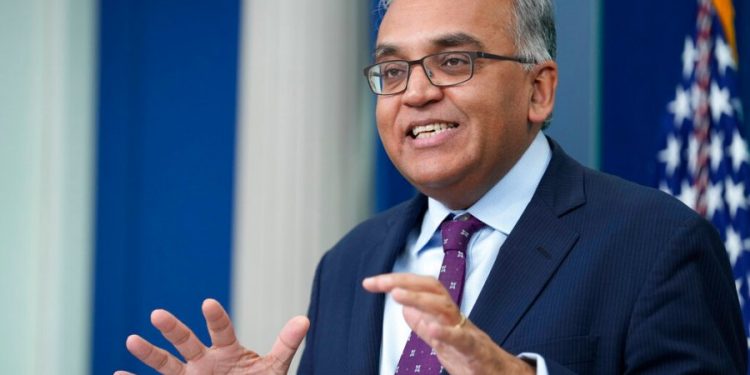The White House is signaling that it wants to close the book on the COVID-19 pandemic once the public health emergency expires Thursday.
But even as the administration and the public look to move on, experts say the virus won’t go away. Hundreds of people still die every day from COVID-19, and more are being hospitalized. The current situation is precarious and could backslide in the fall.
The administration also faces a challenge in filling leadership roles across key health positions, including the National Institutes of Health, the National Institute of Allergy and Infectious Diseases, the Centers for Disease Control and Prevention (CDC), and a new White House pandemic response office.
CDC Director Rochelle Walensky said she will step down effective June 30, and her replacement likely will be the last person a president can appoint to the job without Senate confirmation.
The government funding bill passed at the end of last year will make the CDC director subject to confirmation, but not until Jan. 20, 2025.
Walensky assumed the position in the midst of the greatest threat to the health of Americans in decades, and the pandemic defined much of her tenure.
She faced criticism from Democratic and Republican lawmakers over the agency’s muddled communication and guidance, but forged ahead and last year announced a major organizational overhaul to streamline the agency and make it more accountable.
Walensky’s announcement came just days before the administration is set to end the three-year-old COVID-19 public health emergency. When that declaration expires on Thursday, so too will a number of pandemic flexibilities and administration powers.
Ashish Jha, the White House’s COVID-19 response coordinator, said ending the public health emergency doesn’t mean the administration thinks it’s done with COVID-19.
“The end of the public health emergency marks a transition, not an end to COVID,” Jha said in a brief interview. “It’s a transition, and it’s a transition to a period of time where we can manage this virus in a way that’s not disruptive.”
But the administration’s COVID-19 response team will disband in the coming weeks, and the newly created Office of Pandemic Preparedness and Response has no leader and no staff.
Rochelle Walensky, director of the Centers for Disease Control, listens during a Sept. 14, 2022, Senate Health, Education, Labor, and Pensions Committee hearing in Washington. (Peter Afriyie)
Administration officials are still working through the details, and they have said they will stand up the office as required by law. But it won’t be ready for a handoff when the public health emergency ends May 11, and experts are concerned the leadership vacuum could stymie future efforts to combat COVID-19.
Jha would not say when he is planning to leave his White House role and stressed the administration is “absolutely not” wrapping up its work to address COVID-19, despite the vacancies.
“We’re in a transitioning phase of managing and dealing with COVID,” Jha said. “During periods of transition, it is normal to see people who have been working day and night for months and months [depart.] But we are absolutely committed to continuing the fight against COVID and continuing the fight against future pandemics.”
Whoever Biden appoints as Walensky’s successor is going to have to navigate what comes next, both in terms of public health and politics.
COVID-19 is falling down the list of political priorities, and there’s an increasing gulf between what the administration says is needed and what Congress is willing to fund.
“No matter who the leader is of CDC, unless there’s ongoing support on a regular basis, the public health system will struggle. You need a leader who will come in and who is going to want to advocate for the adequate resources that are necessary,” said Julie Morita, executive vice president of the Robert Wood Johnson Foundation.
A former administration official said they expected Biden and his team to look for a replacement who is more of a manager who can run a large government agency, rather than someone whose specialty is responding to an ongoing pandemic.
Morita said the new CDC director should be someone from the public health field, rather than a clinician.
“Clinical medicine is doctors who provide care to individuals. Public health is about how you prevent disease, promote health in large populations … there’s very different approaches and background and skills that are necessary for a leader who is responsible for the public health of the nation,” she said.
While the White House is moving away from the immediate emergency of COVID-19, scientists cautioned that the virus is unpredictable.
“I don’t think the COVID situation ends for CDC,” said Michael Osterholm, director of the University of Minnesota’s Center for Infectious Disease Research and Policy. “I think the challenge is going to be, we’re not sure that it’s done yet.”














